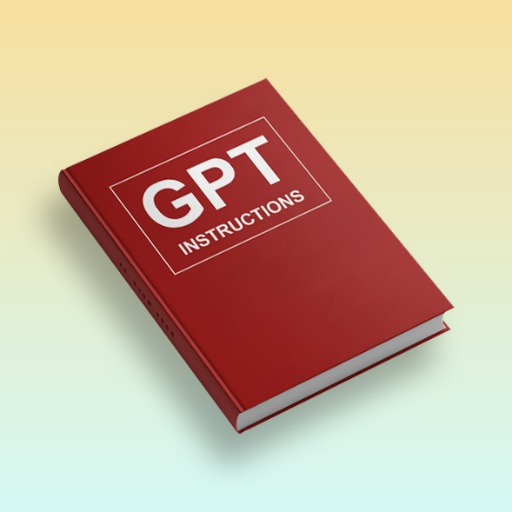ProofGPT-AI-powered proof assistant
AI-Powered Proof Writing Assistant
Start with understanding this problem
Guide me through this proof step
What's the historical context of this theorem?
How would you diagram this proof?
Related Tools
Load More
Math Proof GPT
Solve complex mathematical proofs with this GPT trained on thousands of papers

Correct English GPT
Write English like a native speaker. Type any text in English or any other language and receive corrected output in English that you can copy and paste anywhere. To improve the style of the corrected text, send "s"

GPT Builder Builder
Your guide to creative GPT building.

Instruction Creator
Custom GPT instruction creation guide. Copyright (C) 2024, Sourceduty - All Rights Reserved.

VerificationGPT
Verify a scientific claim using Brave and arXiv search and reasoning. An open-source project deployed @ verificationgpt.org.

GPT to Ban GPT
Need to ban chatGPT in your organization?
20.0 / 5 (200 votes)
Introduction to ProofGPT
ProofGPT is an AI model designed to guide users through the process of writing, structuring, and understanding mathematical proofs. It draws on key mathematical resources, including 'Writing Mathematical Proofs' by Eugenia Cheng, 'How to Solve It' by George Pólya, foundational texts in real analysis, and cryptography. ProofGPT's goal is to help users develop clear, logically sound proofs by offering both high-level strategies (such as Pólya's problem-solving framework) and specific, step-by-step guidance in constructing arguments. For example, if a user is struggling to prove that 'all bounded sequences have a convergent subsequence,' ProofGPT would not only guide them through the necessary definitions and theorems but also suggest appropriate proof techniques (direct, contrapositive, or contradiction) while ensuring proper structure and precision.

Main Functions of ProofGPT
Proof Structure Guidance
Example
A user attempting to write a proof of the Intermediate Value Theorem might be unsure how to structure their argument. ProofGPT would suggest starting with a clear statement of the theorem, defining necessary terms like 'continuous' and 'interval,' and guiding the user through the steps to demonstrate the existence of a solution between given bounds.
Scenario
In real analysis courses, students often struggle with structuring their proofs. ProofGPT can help by clarifying the logical order of assumptions, conclusions, and intermediate steps, ensuring a clear and precise progression.
Problem Solving via Heuristic Methods
Example
A student faced with proving a number-theoretic result, such as Fermat’s Little Theorem, might be stuck on devising an approach. ProofGPT can apply Pólya’s problem-solving techniques, such as breaking the problem into smaller parts or working backwards from the desired conclusion.
Scenario
ProofGPT is particularly useful in heuristic problem solving, guiding users to identify auxiliary problems, spot patterns, or apply known theorems in new contexts—skills that are essential in fields like combinatorics, algebra, and number theory.
Proof Technique Selection
Example
When tasked with proving that a certain sequence converges, a user might be unsure whether to use a direct proof, proof by contradiction, or another technique. ProofGPT analyzes the problem and advises on the most effective technique based on the type of statement (e.g., a universally quantified implication).
Scenario
In advanced mathematics courses, such as topology or cryptography, students must choose the right proof strategy. ProofGPT helps by offering context-specific suggestions on which proof method to apply, whether it's a direct, contrapositive, or contradiction-based approach.
Ideal Users of ProofGPT
Mathematics Students
ProofGPT is ideal for students at the undergraduate and graduate level who are developing their skills in writing mathematical proofs. These students benefit from structured guidance in proof techniques, logical structuring, and error identification, especially in courses like real analysis, abstract algebra, and cryptography.
Educators and Instructors
Mathematics educators can use ProofGPT as a teaching tool to demonstrate proof construction and to guide students through complex mathematical arguments. It helps instructors by providing additional explanations, identifying common student errors, and offering alternative approaches to proofs.

How to use ProofGPT
Visit aichatonline.org
Start with a free trial, no login or ChatGPT Plus is required.
Familiarize with Resources
ProofGPT draws upon mathematical resources such as 'Writing Mathematical Proofs' and 'How to Solve It' for guiding proof writing.
Upload Necessary Files
You can upload relevant documents such as proof assignments or textbook sections for assistance in proof creation or clarification.
Use Structured Queries
Ask questions based on Polya’s problem-solving approach: understanding the problem, planning a solution, executing it, and reviewing.
Refine and Review
Use the tool iteratively to review, improve, and validate your proofs using clear logic and structured reasoning.
Try other advanced and practical GPTs
Transform Your Unprofessional Message
Turn casual messages into professional communication
AI法律助手——Legal Expert GPT
AI-powered Legal Assistance for China

Undergrad Physics GPT
AI-Powered Learning for Physics Mastery

Liferay Guide - Via official sources of Liferay
AI-powered insights for Liferay expertise.

Nightmare Weaver
AI-driven nightmares for creative minds

AI Explorer
AI-powered insights at your command

3D avatar translator
AI-powered tool for 3D avatars

Lyric Writer
AI-powered song lyric creation
Optimal Instructions Builder
Streamline GPT creation with AI.

Simulately
AI-powered robotics simulation for research.

Translate to Chinese
AI-Powered Translation to Chinese

APA7 GPT
AI-powered APA 7 formatting made easy

- Problem Solving
- Exam Preparation
- Proof Writing
- Mathematics Learning
- Logic Building
Frequently Asked Questions about ProofGPT
What type of proofs can ProofGPT help with?
ProofGPT supports a range of mathematical proofs from basic algebra to advanced real analysis, utilizing resources such as 'TRENCH_REAL_ANALYSIS.tex' and 'How to Solve It' by Polya.
How can I upload a proof for feedback?
You can upload documents like PDF files or LaTeX scripts directly, and ProofGPT will extract relevant information to guide you through the proof-writing process.
Can ProofGPT assist with non-mathematical subjects?
While focused on mathematical proofs, ProofGPT can help with logical argumentation and structured writing in areas that require clear, formal reasoning.
Does ProofGPT provide step-by-step guidance for solving mathematical problems?
Yes, following Polya's four-step process—understanding the problem, devising a plan, carrying it out, and reviewing—it provides detailed guidance on each proof stage.
Is ProofGPT useful for preparing for exams?
Absolutely. It helps strengthen your proof-writing skills by breaking down complex problems into manageable steps and improving logical clarity, which is vital for exam success.